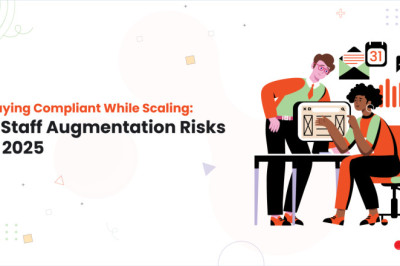views

The beauty industry has become an unexpected target for cybercriminals, with luxury French cosmetics giant Clarins now appearing on the dark web leak site operated by the notorious Everest ransomware group. This development marks another significant breach in the retail sector and highlights the growing vulnerability of consumer-facing brands to sophisticated cyber attacks.
Security researchers monitoring dark web activity discovered Clarins' listing on Everest's data leak site in late 2024, suggesting the attackers have successfully infiltrated the company's systems and extracted sensitive information. The ransomware group, known for targeting high-profile organizations across various industries, typically publishes victim data when ransom demands go unmet.
This incident serves as a stark reminder that no industry remains immune to ransomware threats, even those that might seem less obvious targets than financial institutions or healthcare organizations. For security professionals and business leaders following security news daily, understanding the implications of such attacks has become crucial for maintaining robust cybersecurity postures.
The Everest Ransomware Group's Operations
Everest has established itself as a formidable player in the ransomware landscape through its systematic approach to corporate extortion. The group operates using a double-extortion model, encrypting victim files while simultaneously stealing sensitive data to increase pressure on targets. When companies refuse to pay ransoms, Everest publishes the stolen information on their dark web portal as both punishment and advertisement of their capabilities.
The group's targeting strategy appears deliberately diverse, spanning industries from manufacturing to retail. This approach suggests Everest prioritizes opportunistic attacks rather than focusing on specific sectors, making any organization with valuable data a potential target. Their previous victims have included companies across North America and Europe, demonstrating their global reach and sophisticated infrastructure.
Security experts conducting regular ransomware review have noted Everest's professional presentation and organized approach to data leaks. Unlike some ransomware groups that operate chaotically, Everest maintains detailed victim profiles and follows consistent timelines for publishing stolen information, indicating a well-structured criminal enterprise.
Impact on Clarins and the Beauty Industry
The appearance of Clarins on Everest's leak site raises immediate concerns about customer data exposure and business operations disruption. Beauty companies maintain extensive databases containing personal information, purchase histories, and loyalty program details that cybercriminals find highly valuable. This data can be sold on underground markets or used for identity theft and financial fraud.
For Clarins specifically, the breach potentially affects multiple stakeholder groups. Customers who have purchased products online or joined loyalty programs may have had their personal information compromised. Business partners, suppliers, and employees could also face exposure depending on the scope of the data theft.
The beauty industry's increasing digitization has created new attack surfaces for cybercriminals to exploit. E-commerce platforms, customer relationship management systems, and supply chain networks all present potential entry points for sophisticated attackers. Companies that have rapidly expanded their digital presence without proportionally investing in cybersecurity infrastructure face elevated risks.
Broader Implications for Retail Security
This attack on Clarins reflects broader trends affecting the retail sector's cybersecurity landscape. Consumer-facing brands collect vast amounts of personal data while often lacking the security resources of financial institutions or healthcare organizations. This combination makes them attractive targets for ransomware groups seeking maximum impact with potentially lower defensive barriers.
The timing of attacks also appears strategic, with cybercriminals increasingly targeting retail companies during peak shopping seasons or periods of business transition. These windows create additional pressure on victims to resolve incidents quickly, potentially increasing the likelihood of ransom payments.
Security professionals monitoring these developments note that retail ransomware attacks often receive significant media attention, amplifying the reputational damage beyond immediate operational disruptions. This visibility can influence other criminal groups' targeting decisions and contribute to the overall threat landscape evolution.
Response Strategies and Prevention Measures
Organizations can implement several key strategies to reduce ransomware risks and improve incident response capabilities. Network segmentation helps contain potential breaches by limiting attackers' lateral movement through corporate systems. Regular security assessments identify vulnerabilities before cybercriminals can exploit them.
Employee training programs address the human element of cybersecurity, helping staff recognize phishing attempts and suspicious activities that often serve as initial attack vectors. Multi-factor authentication and privileged access management solutions add additional barriers to unauthorized system access.
Backup strategies require particular attention, as ransomware groups specifically target backup systems to prevent recovery without ransom payments. Organizations should maintain offline backup copies and regularly test restoration procedures to ensure business continuity capabilities remain intact.
Industry Response and Future Outlook
The beauty industry's response to increasing cyber threats has begun accelerating, with major brands investing more heavily in cybersecurity infrastructure and threat detection capabilities. Industry associations are developing sector-specific security guidelines and information sharing mechanisms to help smaller companies improve their defensive postures.
Regulatory attention on retail cybersecurity continues expanding, with privacy laws requiring prompt breach notifications and imposing financial penalties for inadequate data protection. These regulatory pressures create additional incentives for companies to prioritize cybersecurity investments.
Law enforcement agencies are intensifying efforts to disrupt ransomware operations, though the international nature of these criminal enterprises presents ongoing challenges. Successful prosecutions and infrastructure seizures have temporarily disrupted some groups, but new operators regularly emerge to fill market gaps.
Strengthening Cybersecurity in an Evolving Threat Landscape
The Clarins incident underscores the universal nature of ransomware threats across all business sectors. Organizations can no longer assume their industry profile provides protection from sophisticated cybercriminals. Instead, comprehensive security strategies must address evolving attack methods and account for the increasing professionalization of ransomware operations.
Companies should regularly review their cybersecurity today postures through both internal assessments and external penetration testing. These evaluations help identify gaps before attackers can exploit them and ensure defensive measures keep pace with emerging threats.
Staying informed about current attack trends through reliable security news sources enables organizations to adapt their defensive strategies proactively. The cybersecurity landscape continues evolving rapidly, making continuous learning and adaptation essential for effective threat mitigation.











